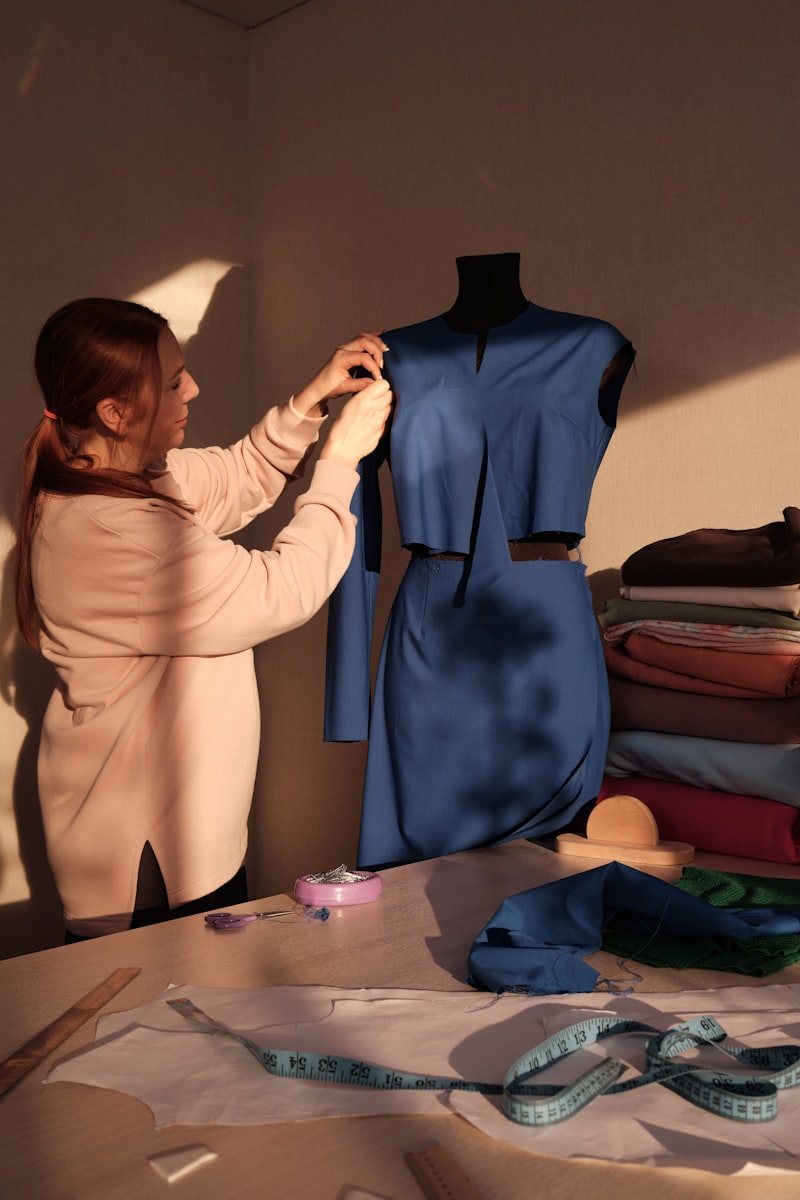Mastering Tailor-made Dress Design Techniques: Elevate Your Fashion Game
Mastering Tailor-made Dress Design Techniques: Elevate Your Fashion Game
In the world of fashion, the phrase "Tailor-made dress design techniques" holds significant importance, capturing the essence of custom clothing creation. Understanding these techniques can provide aspiring designers and fashion enthusiasts with the skills required to craft beautiful, personalized garments that fit perfectly. This article will cover essential elements of tailor-made dress design, including techniques, tools, and tips to elevate your sewing skills.
Understanding Tailor-made Dress Design Techniques
Creating a tailor-made dress involves a mix of artistry and technique. The goal is to design garments that not only fit the wearer well but also reflect their personal style. Below are some fundamental techniques involved in the process:
1. Fabric Selection
The first step in any dress design is selecting the appropriate fabric. Factors such as weight, texture, and drape play crucial roles in how a dress will look and function. Some popular fabric choices include:
| Fabric Type | Characteristics | Uses |
| Cotton | Breathable, easy to sew | Casual dresses, summer wear |
| Silk | Luxurious, elegant drape | Evening gowns, wedding dresses |
| Wool | Warm, structured | Winter dresses, tailored outfits |
2. Drafting Patterns
Once fabrics are selected, the next step is drafting patterns. This involves creating a blueprint of the dress, including all dimensions and shapes. There are several methods to draft patterns:
- Flat Pattern Drafting: Involves creating patterns from measurements taken directly from the wearer.
- Draping: A technique where fabric is pinned on a dress form to create the desired silhouette.
- Using Commercial Patterns: Pre-drafted patterns available for purchase can guide your design process.
3. Constructing the Dress
With the patterns ready, the next critical step is constructing the dress. This phase includes cutting the fabric according to the pattern, sewing pieces together, and making adjustments for fit and style. Key techniques involve:
- Seam Types: Different seams (like French seams or flat-felled seams) offer varying levels of strength and finish.
- Finishing Techniques: Techniques like serging or hemming add polish to the garment.
- Fitting Sessions: Testing the dress on the wearer during construction allows for adjustments to ensure the perfect fit.
Fitting Techniques: Mastering Adjustments
Fitting is a crucial aspect of tailor-made dresses. Here are effective fitting techniques:
- Pin Fit: Pinning areas that need adjustment while the dress is on the wearer helps identify alterations needed.
- Bias Stretch: Understanding how fabric stretches can help tailor the dress perfectly to curves.
- Tissue Fitting: Using tissue paper to draft alterations allows for easy adjustments before cutting into fabric.
4. Adding Personal Touches
Personalization is what defines a tailor-made dress. Here are ways to incorporate unique elements:
- Embellishments: Adding beading, embroidery, or lace enhances visual appeal.
- Color Choices: Custom color palettes reflecting personal style can make a significant impact.
- Silhouette Variation: Experimenting with various silhouettes (A-line, mermaid, etc.) can result in a one-of-a-kind creation.

Essential Tools for Tailor-Made Dress Design
Successfully designing a tailored dress requires the right tools. Here are some must-have items:
- Measuring Tape: Accurate measurements are essential for a perfect fit.
- Tailor's Chalk: Useful for marking fabric without leaving permanent marks.
- Sewing Machine: A reliable sewing machine is critical for efficient garment construction.
- Dress Form: A dress form can help visualize the end product and aid in fitting adjustments.
Common Questions on Tailor-made Dress Design Techniques
When diving into tailor-made dress design, individuals often have several queries. Here are answers to some common questions:
- How long does it take to design and create a tailor-made dress? The time varies based on design complexity, but generally, you can expect anywhere from a few days to a few weeks.
- What skills do I need to learn for dress design? Basic sewing skills, pattern-making knowledge, and an understanding of fabric types are essential.
- Can I learn tailor-made dress design online? Yes! Many online platforms offer courses ranging from beginner to advanced levels.
The Importance of Tailor-made Dresses in Fashion
Understanding tailor-made dress design techniques is crucial in a world where fast fashion dominates. Tailor-made garments promote sustainability and individual expression, diverging from standard mass-produced clothing. By investing in knowledge and honing these skills, you pave the way for a fulfilling fashion journey.
Conclusion
In summary, mastering tailor-made dress design techniques is not simply about sewing; it’s about expressing creativity and ensuring impeccable fit and quality. Start with the essentials of fabric selection, pattern drafting, construction techniques, and personalization. With practice and dedication, you can create stunning garments that cater to individual tastes and preferences. Remember, sewing is as much an art as it is a science; patience and perseverance will carry you far in the world of fashion design.
As you begin your journey in tailor-made dress design, consider joining local sewing groups or online forums for additional support and learning. If you face challenges, don’t hesitate to reach out to fellow designers. Happy sewing!
